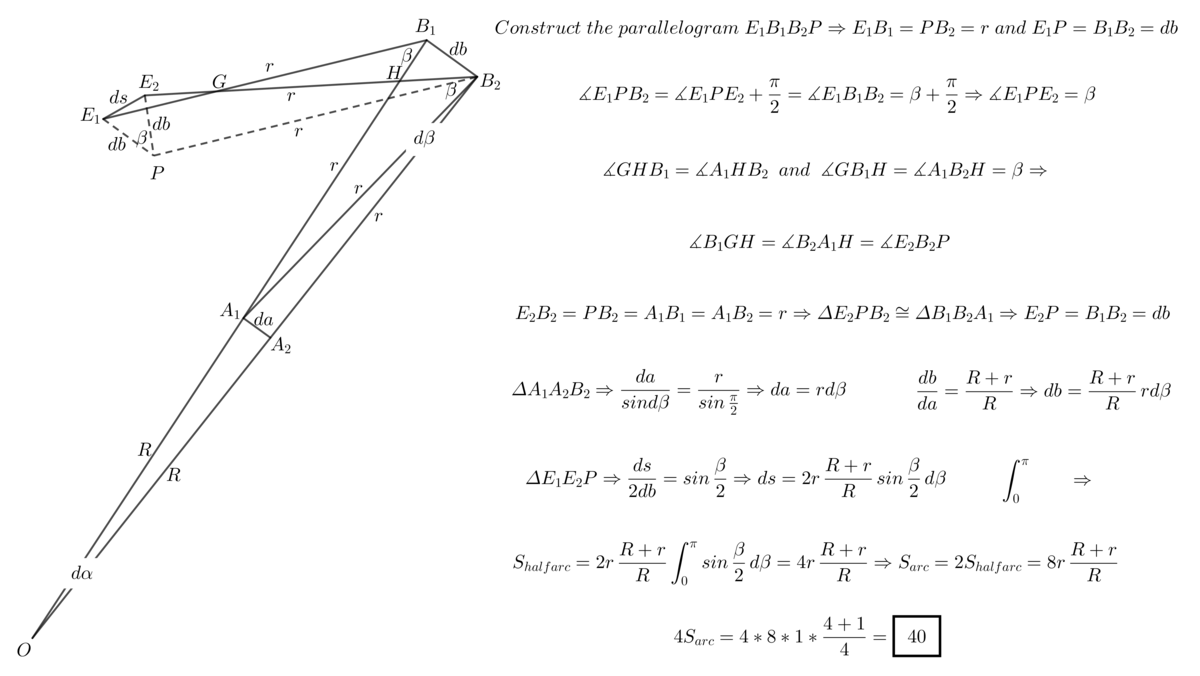Rolling Around
A unit circle rolls around the circumference of a large circle of radius 4, as shown in the figure above. The epicycloid traced by a point on the circumference of the smaller circle is given by
and .
Find the distance traveled by the point in one complete trip about the larger circle.
Problem from Calculus by Ron Larson.
This section requires Javascript.
You are seeing this because something didn't load right. We suggest you, (a) try
refreshing the page, (b) enabling javascript if it is disabled on your browser and,
finally, (c)
loading the
non-javascript version of this page
. We're sorry about the hassle.

To find the total distance traveled by the point, you can find the arc length of the portion lying in the first quadrant and multiplying it by 4 .
\S = 4 ∫ 0 π / 2 ( x ′ ) 2 + ( y ′ ) 2 d t
\S = 4 ∫ 0 π / 2 ( − 5 s i n t + 5 s i n 5 t ) 2 + ( 5 c o s t − 5 c o s t ) 2 d t =
\S = 2 0 ∫ 0 π / 2 2 − 2 s i n t s i n 5 t − 2 c o s t c o s 5 t d t =
\S = 2 0 ∫ 0 π / 2 2 − 2 c o s 4 t d t =
\S = 2 0 ∫ 0 π / 2 4 s i n 2 2 t d t =
\S = 4 0 ∫ 0 π / 2 sin 2 t d t = − 2 0 [ c o s 2 t ] 0 π / 2 = 4 0
For the epicycloid shown in the figure, an arc length of 4 0 seems about right because the circumference of a circle of radius 6 , i s 2 π × r = 1 2 π = 3 7 . 7 ⋄